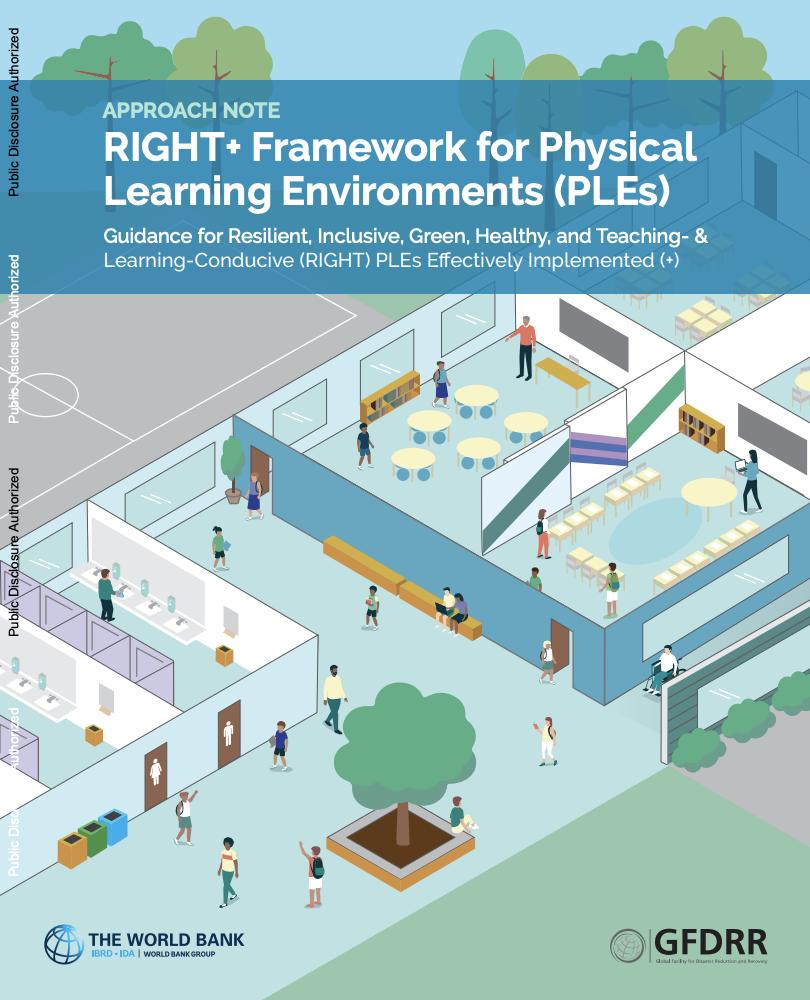In the context of the global learning crisis, climate change, and increasing disasters, Physical Learning Environments (PLEs) can play an important role in increasing education outcomes globally, especially in the most vulnerable populations. For this framework, PLEs comprise the physical elements of the learning environment at three different levels: spaces; the school as a whole; and the network of education facilities. In low- and middle-income countries (LMICs), PLEs face common challenges that result in the exclusion of vulnerable populations, hinder students’ learning outcomes, and threaten students’ and teachers’ health and well-being. The main issues relate to insufficient supply of places in schools, poor physical conditions, and lack of safety. Furthermore, the design of the PLEs is often conceived to support only traditional pedagogical practices, limiting the effectiveness of the teaching-learning process. As a crosscutting challenge, the management of the education infrastructure is critical.
The intended use of this framework is not to be a one-fit-all solution that must be fully implemented using a top-bottom approach. Instead, its objective is to provide education practitioners with an organizational scheme to assess the PLE’s situation and propose solutions for rehabilitating existing PLEs or constructing new ones.
The proposed six strategies, characteristics, and attributes are intended to be used to interpret PLE needs and guide the appropriate design of interventions. To maximize impact, it emphasizes taking advantage of the entry points and building on existing demands, expanding them to maximize impact, creating synergies among factors, and prioritizing interventions based on context and needs. The flexible framework is a reference for local solutions, allowing communities to diagnose and design their proposals with local solutions.
To successfully implement the RIGHT+ framework, task teams must use a comprehensive approach to PLEs that prioritizes the learning process, expands solutions to address the broader context, scales interventions to benefit all education infrastructure, and relies on data-driven decision-making, all complemented with capacity-building processes. By adopting this approach, task teams can promote PLEs that genuinely support learning and development for all, with the potential to impact the education sector.

